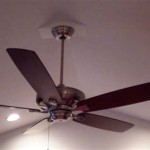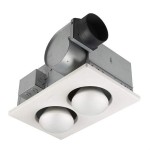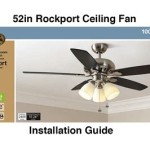Essential Aspects of Installing a Ceiling Fan in an Existing Light Fixture
Upgrading your home's lighting and airflow with a ceiling fan is a practical and stylish solution. However, if you're planning to replace an existing light fixture with a ceiling fan, there are a few essential aspects to consider for a successful installation.
Electrical Compatibility
Before you begin, ensure that your electrical system can handle the additional load of a ceiling fan. Most ceiling fans require a dedicated circuit with a capacity of 15 amps or more. If your existing light fixture circuit is not up to par, you may need to call an electrician to upgrade it.
Ceiling Support
Ceiling fans can weigh significantly, so it's crucial to ensure that your ceiling is strong enough to support them. If the ceiling joists are too far apart or not sturdy enough, you may need to install additional support beams or bracing.
Height and Clearance
The height and clearance of the ceiling fan are essential factors to consider. There should be at least 7 feet of space between the floor and the fan blades when it is installed. Additionally, ensure there is enough room around the fan for the blades to rotate freely without hitting walls or other objects.
Electrical Wiring
Once you have determined that the ceiling and electrical system are suitable, you can proceed with the electrical wiring. Shut off the power at the circuit breaker panel before starting any electrical work. If you are not confident in your electrical skills, it is recommended to hire a qualified electrician to handle the wiring.
Mounting the Fan
With the electrical wiring complete, it's time to mount the ceiling fan. Most fans come with detailed instructions for mounting the bracket and the fan body. Ensure the fan is securely fastened to the ceiling and that the blades are level.
Balancing the Blades
Once the fan is mounted, it's important to balance the blades. This step is essential to prevent wobbling and excessive noise during operation. Most ceiling fans include a balancing kit that you can use to adjust the weight on the fan blades.
Installing the Remote Control (Optional)
If your ceiling fan comes with a remote control, you will need to install it according to the manufacturer's instructions. This may involve wiring the receiver unit to the fan motor and programming the remote.
Safety Precautions
Before operating the ceiling fan, ensure it is properly installed and balanced. Always use caution when working with electricity and follow all safety precautions. If you have any doubts or encounter any difficulties during the installation process, do not hesitate to consult a qualified electrician.

Wiring A Ceiling Fan And Light With Diagrams Ptr

Replacing A Ceiling Fan Light With Regular Fixture Jlc

Installing A Ceiling Fan Without Existing Wiring Electricians Talklocal Blog Talk Local
Replacing A Ceiling Fan Light With Regular Fixture Jlc

How To Install A Ceiling Fan Brennan Electric In Seattle Wa

How To Replace A Light Fixture With Ceiling Fan Projects By Peter

Installing A Ceiling Fan Without Existing Wiring Mr Electric

Can You Add A Light Fixture To Ceiling Fan Rings World The Local Business Directory For Small And Large Businesses

Ceiling Fan Light Kit Installation How To

How To Install A Ceiling Fan Where No Fixture Exists 8 Step Guide Home Inspector Secrets
Related Posts








